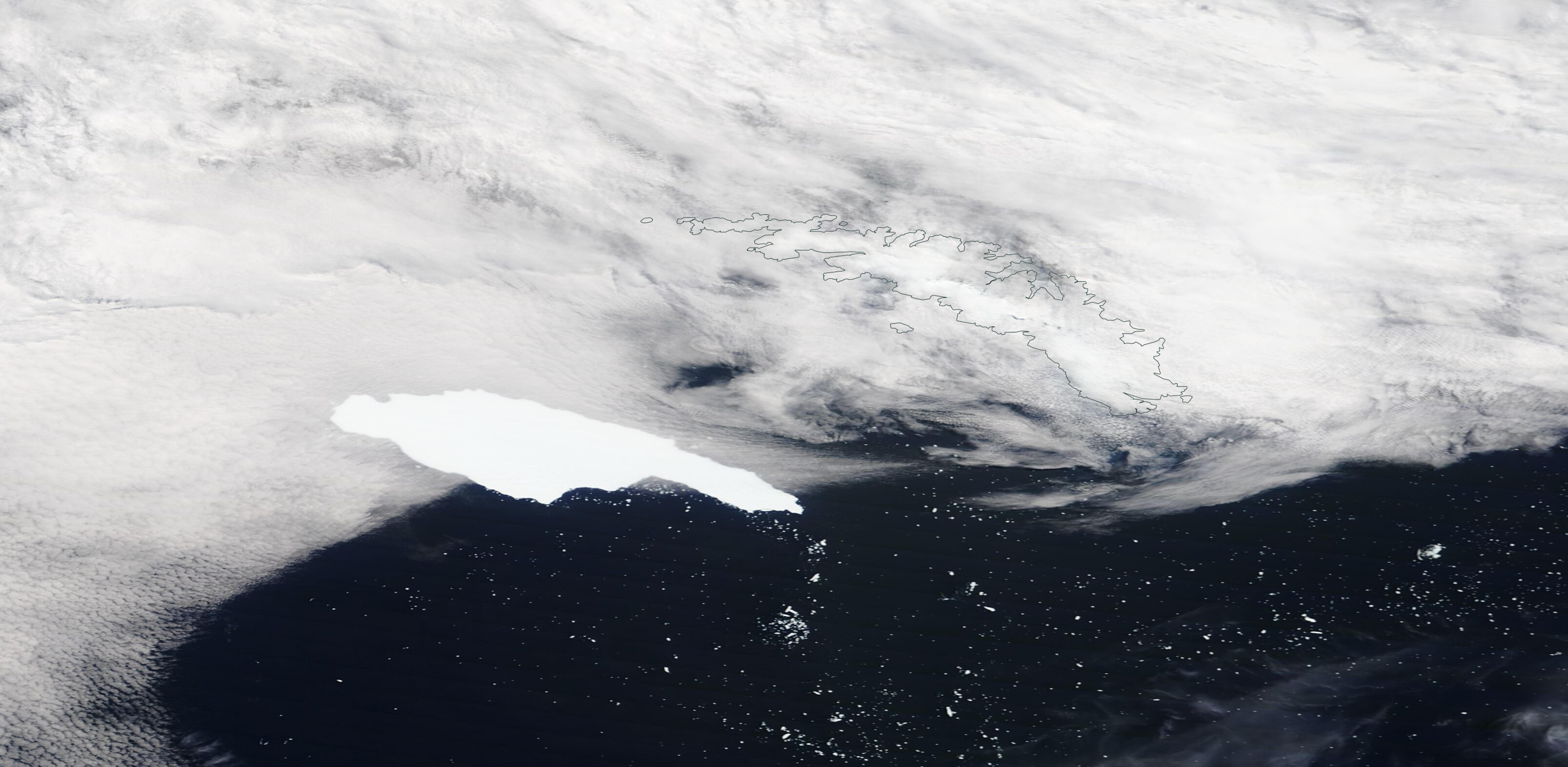
In Episode 95 we got a little impression of the world's largest iceberg currently floating in our oceans. Since then, A-68A has moved on his journey and left the vicinity of the Weddell Sea and entered the South Atlantic following the paths of the Antarctic Circumpolar Current. With an area of still roughly 4.700 square kilometres, the iceberg is heading with a speed of approximately 1 kilometre per hour towards the island of South Georgia, part of the British Overseas Territory South Georgia and the South Sandwich Islands. The slightly smaller island covers an area of 3,528 square kilometres and houses more biomass per square kilometre on the coastal terrain of South Georgia than on any other place on Earth, being home to approximately 5 million seals of four different species and more than 1.5 million penguins, including the second largest of all penguin species, the king penguin. Its surrounding waters serve as an important habitat for migrating whales and diverse fish populations.
Remarkably, the 150 kilometres long but only 200 metres thick A-68A has stayed pretty much intact despite over three years of drifting in the Southern Ocean given its area-to-thickness ratio that is approximately the same as a few sheets of copier paper stuck together. But it is this feature that makes the iceberg so dangerous. The particular shallow waters host a diverse marine life that plays a critical role in balancing global climate as it acts as a carbon sink. If the iceberg approaches these shallow waters, it has the potential to scrape the seafloor and thereby significantly disrupt the important ecosystem. This would disturb the wildlife and release carbon into the water and ultimately into the atmosphere with the potential to upset the balance for years to come.
The British Antarctic Survey fears that the closer the iceberg comes to the shores of the remote island, the higher the chances of a large negative impact that might happen during a critical time of the breeding season when the seal pups and penguin chicks are growing fast and require frequent meals from their parents. As a result, the parents have a time limit to find enough food during their foraging trips and get back to their offspring before they starve. The iceberg could disrupt this process in several ways. All these factors could lead to very few young penguin and seals surviving this year. Even more frightening is that the sheer size of the iceberg means that it could be around for many years, which could lead to the collapse of many penguin and seal colonies on South Georgia.
However, scientists stress that it is hard to predict which way the giant iceberg ultimately takes. The chances are somewhat 50:50 that A-68A follows the fate of its smaller breakoff A-68C on a route around the southern end of the island until it reaches the open waters of the South Atlantic heading into warmer waters, where it could break apart much faster.
